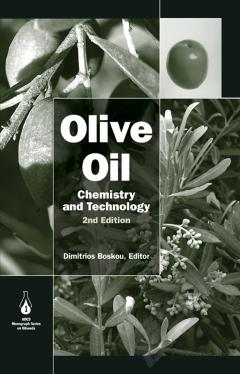The Chemistry and Technology of Petroleum
PART I: HISTORY, OCCURRENCE, AND RECOVERY History and Terminology Historical Perspectives Modern Perspectives Definitions and Terminology Native Materials Manufactured Materials Derived Materials Oil Prices Classification Classification Systems Miscellaneous Systems Reservoir Classification Origin and Occurrence Origin Occurrence Kerogen Properties Composition Classification Isolation Methods for Probing Kerogen Structure Structural Models Kerogen Maturation Exploration, Recovery, and Transportation Exploration Drilling Operations Well Completion Recovery Products and Product Quality Transportation New! Recovery of Heavy Oil and Tar Sand Bitumen Oil Mining Nonmining Methods PART II: COMPOSITION AND PROPERTIES Chemical Composition Ultimate (Elemental) Composition Chemical Components Chemical Composition by Distillation Fractional Composition Distillation Solvent Treatment Adsorption Chemical Methods Use of the Data Petroleum Analysis Petroleum Assay Physical Properties Thermal Properties Electrical Properties Optical Properties Spectroscopic Methods Chromatographic Methods Molecular Weight Use of the Data Structural Group Analysis Methods for Structural Group Analysis Miscellaneous Methods Asphaltene Constituents Separation Composition Molecular Weight Reactions Solubility Parameter Structural Aspects Structure of Petroleum Molecular Species in Petroleum Chemical and Physical Structure of Petroleum Stability or Instability of the Crude Oil System Effects on Recovery and Refining Completely Revised! Instability and Incompatibility Instability and Incompatibility in Petroleum Factors Influencing Instability and Incompatibility Methods for Determining Instability and Incompatibility Effect of Asphaltene Constituents PART III: REFINING New! Introduction to Refining Processes Dewatering and Desalting Early Processes Distillation Thermal Methods Catalytic Methods Hydroprocesses Reforming Isomerization Alkylation Processes Polymerization Processes Solvent Process Refining Heavy Feedstocks Petroleum Products Petrochemicals Completely Revised! Refining Chemistry Cracking Hydrogenation Isomerization Alkylation Polymerization Process Chemistry Completely Revised! Distillation Pretreatment Atmospheric and Vacuum Distillation Equipment Other Processes Completely Revised! Thermal Cracking Early Processes Commercial Processes Catalytic Cracking Early Processes Commercial Processes Catalysts Process Parameters New! Deasphalting and Dewaxing Processes Commercial Processes Dewaxing Processes Completely Revised! Hydrotreating and Desulfurization Process Parameters and Reactors Commercial Processes Catalysts Biodesulfurization Gasoline and Diesel Fuel Polishing Completely Revised! Hydrocracking Commercial Processes Catalysts Completely Revised! Hydrogen Production Processes Requiring Hydrogen Feedstocks Process Chemistry Commercial Processes Catalysts Hydrogen Purification Hydrogen Management Product Improvement Reforming Isomerization Alkylation Polymerization Catalysts Product Treating Commercial Processes Gas Processing Gas Cleaning Water Removal Liquids Removal Nitrogen Removal Acid Gas Removal Enrichment Fractionation Claus Process Completely Revised! Products Gaseous Fuels Gasoline Solvents (Naphtha) Kerosene Fuel Oil Lubricating Oil Other Oil Products Grease Wax Asphalt Coke Sulfonic Acids Acid Sludge Product Blending Petrochemicals Chemicals from Paraffins Chemicals from Olefins Chemicals from Aromatics Chemicals from Acetylene Chemicals from Natural Gas Inorganic Petrochemicals Synthesis Gas PART IV: ENVIRONMENTAL ISSUES New! Environmental Aspects of Refining Definitions Environmental Regulations Process Analysis Epilog New! Refinery Wastes Process Wastes Types of Waste Waste Toxicity Refinery Outlook Management of Refinery Waste New! Environmental Analysis Petroleum and Petroleum Products Leachability and Toxicity Total Petroleum Hydrocarbons Petroleum Group Analysis Petroleum Fractions Assessment of the Methods Conversion Factors Glossary Index *Each Chapter contains Introduction and Reference sections
{{comment.content}}








 京公网安备 11010802027623号
京公网安备 11010802027623号